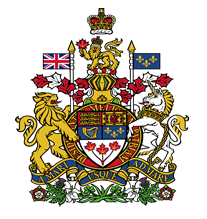Canada: Government
Key Figures
- Chief of State:
- King Charles III represented by Governor General Mary Simon
- Head of Government:
- Prime Minister Justin Pierre James Trudeau
Overview
- Government Name:
- Canada
- Constitution:
- Adopted: 1986; The constitution is not written in one single document, but instead in a number of constitutional acts. These acts outline the system of government and civil rights of citizens and those in Canada.
- Government Type:
- Federal Parliamentary Democracy under a Constitutional Monarchy

Index of Economic Freedom
Country Risk Rating
Government Branches
| Main Powers | Election Process | Election Cycle 1 | |
|---|---|---|---|
| Executive | The king is the ceremonial figure for the Canadian government. The governor-general performs the Monarch's federal constitutional duties, acting within the principles of parliamentary democracy and responsible government as a guarantor of continuous and stable governance. The prime minister advises the Canadian Monarch or viceroy. It exists only as per long-established convention. The QPC (Privy Council) act as personal consultants to the Monarch depending on their specific title names. |
The king is hereditary. The governor-general is appointed by the king. The prime minister is appointed by the king. The QPC (Privy Council) is appointed by the governor-general. |
Governor-General: at His Majesty's pleasure (normally 5 years); Prime Minister: at His Majesty's pleasure; QPC: Life |
| Judicial | The judiciary protects the freedom and rights of the citizens. |
The chief justice and judges are appointed by the prime minister in council. |
Mandatory retirement age of 75 |
| Legislative | The senate tends to be less dominant than the house of commons. The approval of both houses is needed for legislation, but the senate rarely rejects bills passed by the directly elected commons. |
The senate has 105 members who are appointed by the governor-general. The house of commons has 338 members who are elected by majority vote in single-member constituencies. |
Senate: no terms are set and senators may serve until the age of 75; House of Commons: 4 years |
Regional Trade Blocs
International Organization Participation [2]
Environmental Agreements [3]
Tax Information [2]
- Tax Authority:
- Canada Revenue Agency
- Tax Name:
- GST
Sources:
- ElectionGuide http://www.electionguide.org/
- EY, http://www.ey.com
- CIA World Factbook, https://www.cia.gov/the-world-factbook/
- U.S. Bilateral Relations Fact Sheets http://www.state.gov/r/pa/ei/bgn/


